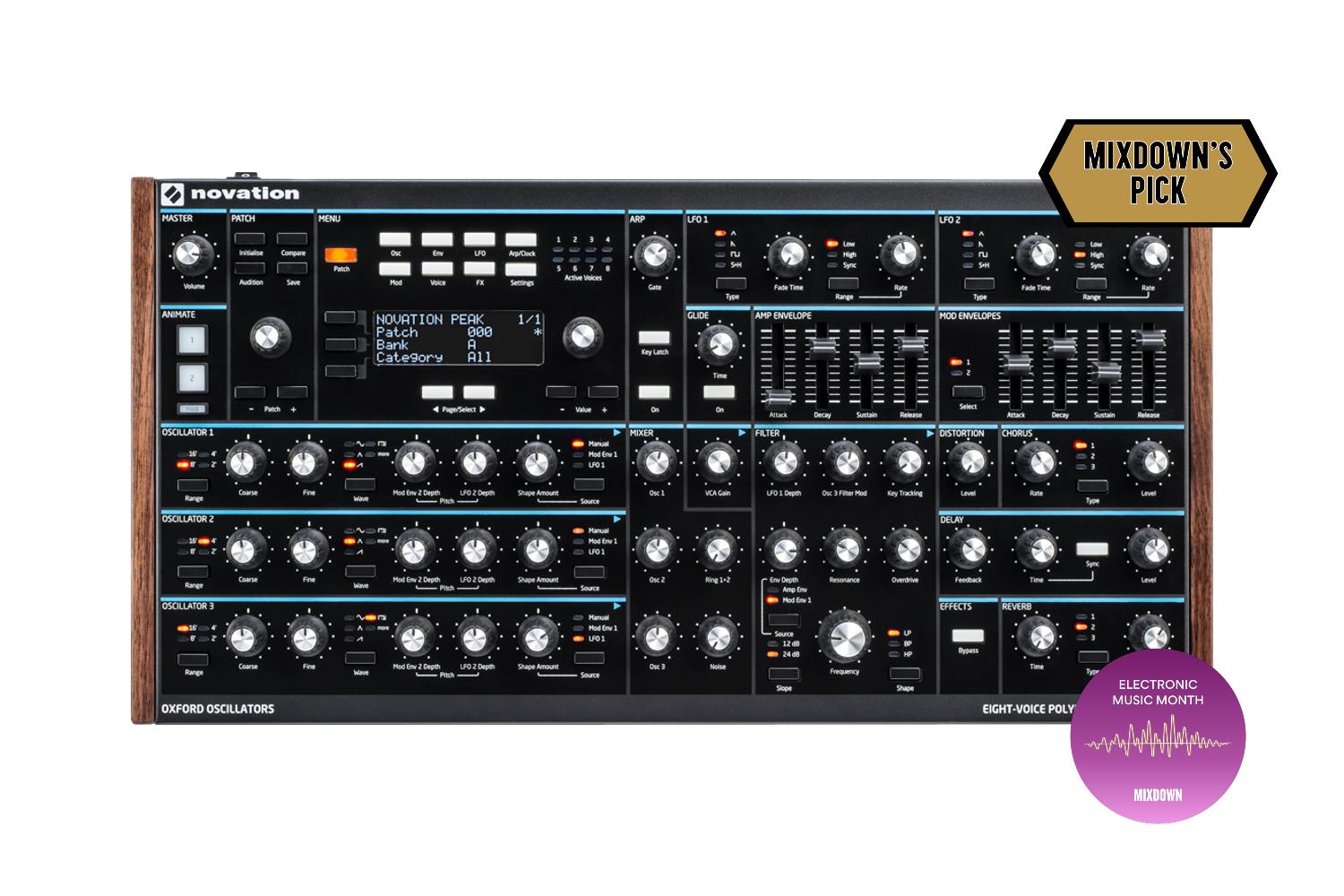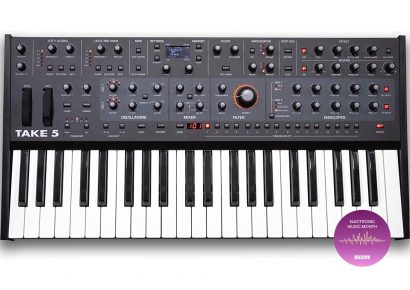Focusrite Australia | Enquire for pricing
Digital synths have been around since the ‘80s, producing some of the most iconic synth tones of the last 30 years and yet, still to this day we have people willing to eschew all the technical and programming upside of digital in favour of the allure of classic analog synthesis.
Synth purists with GAS (gear acquisition syndrome) will bicker for days about what made that specific analog synth on a particular track sound so “warm”, “rich” or any other subjective shorthand used to describe a beautiful-sounding synth tone. Yet, in the same breath, they’ll simultaneously disregard digital synths due to their “clean” or “sterile” sounding output.
Read more product reviews here.
Well as anybody working in 2022 will probably be able to tell you, the holy grail exists somewhere in the middle – signal chain that exploits the advantages of both digital and analog components to provide something both rich in tone and highly flexible in application.
Enter the Novation Peak, a hybrid analog and digital synth that claims its oscillators sound completely analog while being created completely in the digital realm. This eight-voice polyphonic synth has three octaves per voice, an analog multi-mode filter with multiple distortion stages, three quality effects, multiple LFOs, and a modulation matrix that allows pretty much anything to affect anything else.
Emulating this analog “warmth” in the digital realm relies upon their use of a Field Programmable Gate Array (FPGA) chip instead of standard DSP. The FPGA is capable of running in parallel which makes the internal processing faster which Novation claims has a direct impact on the sound.
As the Peak is a hybrid analog and digital synth, the conversions that occur within the audio between the pre and post filter signal is imperative. Novation really went above and beyond with this, utilising eight DAC chips for each voice, sampling at over 24 MHz (500x standard audio processing). This essentially eliminates aliasing within the onboard processing of the Peak allowing you to utilise its wavetable functionality (which we’ll touch on later) without that harsh and nasty top end that you might find within VST wavetable synths.
Utilising NCO’s (Numerically-Controlled Oscillators) on their New Oxford Oscillators, the Novation Peak outputs some of the richest oscillator sounds I have heard in my time. There’s even a setting to add diverge and drift to further emulate an analog sound by slightly detuning all 24 oscillators away from centre either at a fixed level (diverge) or changing over time (drift).
Each oscillator has an identical control set to each other which allows for a wide range of tone control on synth patches. These controls are pitch octave, coarse and fine tuning, waveform selection, pitch modulation, and shape amount, which changes the waveshape of the oscillator. Plus, you can dig into the oscillator settings and use Saw Dense and Dense Detune options to create the super saw of your trance dreams.
While you can use classic waveforms to sculpt your tones, there’s also wavetables available on all three oscillators. You can use the provided ones which range from subtle variations to extreme ones and even use Novation Components to add your own wavetables to the Peak for additional sound design avenues to pursue.
The mixer section of the Peak features volume control for all three oscillators, plus a ring modulator multiplies oscillator one and two together, a noise generator, and a VCA gain which is essentially a level control for the oscillator mixer before it hits the filter section.
After mixing oscillators together, you arrive at the analog portion of the Peak, the filter section. This resonant multi-mode filter features low, band, and high pass filter options at 12 or 24 dB/octave cutoff slopes with standard frequency and resonance knobs alongside key tracking, and a handful of modulation options on the surface (with many more in the mod matrix but we’ll talk about this later). What’s really sweet about this all analog filter section is that it’s independent for each of the eight voices. This allows for this synth to have the analog pre and post filter distortion applied per voice as well as the overall distortion which can add a vast range of additive harmonics to the signal chain.
There’s an amplitude envelope alongside two modulation envelopes and four LFOs (two are in the menu) which have quite a few assignments on physical knobs. This combined with some other parameters creates 16 “hard patched” modulation parameters that are great for making quick and decisive moves on the Peak, cutting out menu diving and modulation assignments which often stifle creativity.
For those who are more adept with crafting synth patches, the modulation matrix has 16 flexible assignments which allow you to map a large range of controls be that MIDI/CV in, LFOs, or envelopes to even more parameters on the Peak. The mod matrix can be further explored by utilising the animate buttons which essentially act as momentary and latchable modulation switches which can alter the sound at the press of a button.
In addition to all these fantastic features, the Peak has three dedicated effects which can all be used simultaneously to create a track-ready sound all in the synth. The Chorus, Delay, and Reverb all sound excellent and I found during testing that I couldn’t switch them off on any of the patches I created because they added so much to the sound. That’s not to say that you can’t turn them off, there’s an effects bypass button that completely cuts them out of the signal chain if that’s something you want.
The inbuilt arpeggiator is more complex than the single knob on the surface would indicate. There’s multiple playback modes including up, down, random, and chord, which when combined with the rhythm parameter allow you to generate more than the average 16th note arp sound. Rhythm has 33 different playback sequences that will follow the playback mode of your choosing allowing for simple or complex patterns to be played back which can be combined with swing and the octave range for interesting results.

Most controls on the Peak live within your eyesight which make for an intuitive experience when using it. There’s digital menus for some of the less-used parameters including FX, LFO, modulation, oscillator, voice, and arpeggiator settings. Most could probably live without them but they give more functionality to the Peak, and as they continue to update the firmware (the last update was a month before writing this review) Novation can continue to build on what is an already exceptional synth.
All in all, this sleek and modern digital/analog hybrid is a gorgeous sounding synthesiser that emulates analog-sounding oscillators with ease and meshes the best of both analog and digital worlds into one box. Whether you want to create lush pads, dense leads or biting bass sounds, the Novation Peak should be at the top of your list for the sheer range of sonic prowess the unit is capable of.
Head to Novation for more information. For local enquiries, get in touch with Focusrite Australia.

